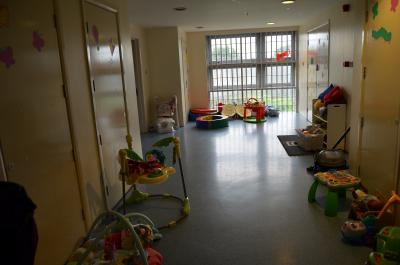Guest post by Dr Anna Schliehe. Anna joined the COMPEN project as a Research Associate in June 2016. She completed her doctoral research project in Human Geography on the Scottish criminal justice system and its responses to young women. This is the fourth post of Border Criminologies' themed series 'Penal Policymaking and the Prisoner Experience', organised by Ben Crewe.
As part of one of Compen’s sub-studies on entry, exit and post-release of prisoners across different prisons in England and Wales, the research team wanted to include experiences of female prisoners and women classed as foreign nationals in the prison system. The rapid increase of the foreign national prison population in the UK has been the topic of a number of blogs on Border Criminologies. As Emma Kaufman has argued, the ‘treatment of foreign nationals is deeply implicated in the politics of race and the construction of British national belonging’. It is also characterised by an intricate form of carceral circuitry in which sites of the prison, immigration removal centres are intertwined with the threat of deportation.

Entry
When Amelia (pseudonym) arrived at the prison, she had given birth the previous day and was holding her small baby daughter in her arms. When she got to the reception area, she said:
I was waiting (…) nearly three hours without hot... any drink. They didn't ask me for nothing. There

These acute, personal worries, which many women in prison face, were interconnected with other difficulties Amelia experienced specifically as a foreign national. One has to do with interpretation:
And interpreter... (…) she say opposite things, example: (…) 'Did

Honestly, it was a big stress for me. Especially when they sent me to a detention centre – I was so scared because I spent in prison three years and then a new place, new people, new everything. And especially there, all of them, they have the big stress because most of them they want to go but they don’t have ticket and some of them they want to stay but they can’t and all of them are depressed. So they put all of this depress on me. (Olga, p. 2)
Uncertainty about release was hard to bear (see also here and here). Even now, in her own home, Olga experienced a great deal of anxiety about having to leave her young son again as well as her mother, who had to come to the UK to look after him. She felt at the mercy of a law that did not apply to her fairly. As Kaufman claims, each of these facets of prison and post prison life can be connected to the politics of identity on an individual and personal level as well as with regards to ‘broad philosophical questions about the boundaries of British society and the obligations of the British state’. Like tightness, the ‘breadth’ of imprisonment – its lasting impact – has a different quality for foreign national prisoners.
This very particular form of mobility and stasis, which runs through so many foreign national prisoners’ experiences, is described in carceral geography as another form of punishment. What Gill et al call carceral circuitry ‘carves up the imagined geography of discrete institutions which men and women enter and from whence they are ‘released’ in favour of emphasizing continuity across institutional and urban settings’. The containment and management as ‘risk factors’ of these particular foreign national bodies, from a national level to the micro-level of the home and the prison, shows a very particular form of breadth and tightness within the penal system in England and Wales.
Any comments about this post? Get in touch with us! Send us an email, or post a comment here or on Facebook. You can also tweet us.
__________
How to cite this blog post (Harvard style)
Schliehe, A. (2018) Women’s Imprisonment and the Experiences of Foreign Nationals. Available at: https://www.law.ox.ac.uk/research-subject-groups/centre-criminology/centreborder-criminologies/blog/2018/05/womens (Accessed [date]).
Share:








